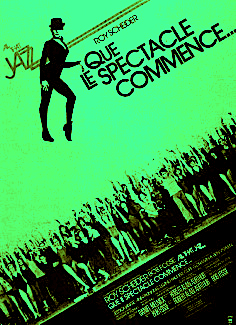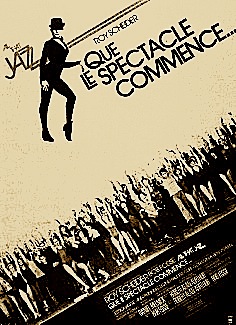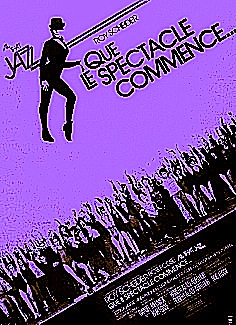


Sorry about the sporadic posts of late, campers — the Grumpy Relative’s health woes continue, and I’ve been trying to spend as much time with GR as humanly possible of late. Turns out that keyboards are surprisingly noisy when someone is trying to sleep.
Tonight, though, I may bang on the keys as much as I like. That’s fortunate, because I’ve been eager to get back to our ongoing discussion of techniques to tighten up a sluggish manuscript.
Standard disclaimer: because every manuscript is as different as the proverbial snowflake, there’s no way to come up with a list of pacing rules that applicable to every one. As I mentioned last time, every writer has preferred means of slowing down or speeding up text.
Thus my asking you to take marking pens to your manuscript. To identify what could use trimming, you need to recognize your particular writing patterns. So let’s get back to the nitty-gritty, shall we?
In my last post, I asked you — politely, I hope — to sit down with some of your favorite chapters throughout your book and differentiate by colored markings abstract vs. concrete statements of characterization.
You remember the difference, right? Abstract statements bottom-line a character’s ever-changing array of feelings, thoughts, actions: Pierre felt morose, Jerry was sexy, Maura was a tall, cool hunk of woman, etc. Such sentences can save a lot of time in a narrative, quickly providing the reader a sense of what’s going on and who is doing it.
Sometimes, that’s a technique that can come in very handy. When an action scene, for instance, suddenly requires fifteen thugs to jump Our Hero, describing each one individually and in a nuanced manner would slow the scene down to a crawl. Or in a scene where the action is pretty mundane, a swift summary statement like Bernadette spent the next fifteen hours yawning her way through book shelving can act like a fast-forward button for the narration.
By contrast, concrete characterization statements depict what a character is saying, doing, feeling, and so forth in a particular moment. In a story told primarily through concrete statements (and generally speaking, writing with a high concrete/abstract ratio is considered more stylistically polished), the narrative expects the reader to draw conclusions about what characters are like based upon an array of specific actions, feelings, words, and so forth, rather than simply providing a summary statement.
Sound familiar? It should: this is yet another manifestation of everyone’s favorite writing bugbear, the difference between showing and telling.
Obviously, every manuscript ever produced needs both, and the appropriate ratio of abstract to concrete varies quite a bit by genre. Think about it: could you really get away with a summary sentence like, “She had legs that stretched all the way from here to Kalamazoo,” in a genre other than hardboiled mystery, bless its abstraction-loving fan base? (All right, I’ll admit it: one of the all-time best compliments I have ever received came from a writer of hardboiled; he commented on a dress I was wearing by telling me, “You look like trouble in a B movie.” I cherish that.)
That’s one of the primary reasons agents and editors tend to expect aspiring and published writers alike to read a whole lot of recently-published books within the category they write, in case any of you conference-goers out there had been wondering: to gain a working sense of the abstract/concrete statement ratio habitual readers of that type of book will expect to see. (Some other popular reasons for keeping up with the latest releases: learning what that particular readership likes, figuring out what is and isn’t appropriate vocabulary for that specific readership, gaining currency with what’s being published right now, rather than in, say, 1858, and other practical benefits.)
Because, let’s face it, there’s no such thing as a chapter, paragraph, or even sentence that’s appropriate for every book in which the creative mind might choose to have it appear. Context matters — and so does book category.
How, you ask? Avoiding summary statements wherever possible may serve a high-end women’s fiction writer very well, for example, but actually harm certain types of genre novel. The rash of semicolons that might make an academic book look learned is unlikely to fly in a Western — but you’d be surprised how much more acceptable it would be in a science fiction novel. And while those of us devoted to literary fiction do occasionally marvel at a story intended exclusively for a college-educated readership (not a bad definition of literary fiction, incidentally) written in very simple language, the vocabulary range of most literary fiction is quite different from that of well-written YA.
And don’t even get me started on how much more acceptable rampant summary statements are in most types of nonfiction than in fiction. Memoirs in particular tend to rely upon them pretty heavily. (Why? Well, as a reader, how eager are you to hear every detail of what happened to even a very interesting real-life narrator over a two-year period? If a memoirist steers too clear of abstract statements like Auntie Mame’s My puberty was bleak, she’s going to end up expending quite a bit of precious page space on illustrating just how bleak it was, right?) There’s just no substitute for familiarity with one’s chosen book category.
Hey, here’s a hint to pass along to the Furtive Non-Denominational Gift-Giver: how about stuffing a grateful writer’s stocking with the five best books released within the last year in his or her book category?
(Note to those of you being driven mad by my frequent use of the term: there’s no such thing as a published book in the United States market that doesn’t fall into a particular book category, no matter how genre-busting it may be. That’s simply how publishers and booksellers think of books. For some tips on figuring out which conceptual container might best house your manuscript for marketing purposes, please see the BOOK CATEGORIES posts on the archive list at right.)
So much for my carefully non-judgmental speech on the subject of abstract vs. concrete statements. That being said, however, it is worth noting that on any given reading day, the average agent, editor, or contest judge sees a whole lot more summary sentences in the course of any given day of manuscript-screening than concrete ones.
Which, obviously, can render a genuinely original telling detail quite a refreshment for weary professional eyes. So, generally speaking, if you can increase the frequency with which such concrete details appear, you’ll be better off in most types of submission.
Ready to take gander at the ratio in what you’ve been submitting — or are planning to submit to professional scrutiny anytime soon? Fantastic. Let’s go ahead and dig up those yellow-and-red pages from last time. But this time grab a third color of pen –- let’s say green, and complete the Rastafarian triumvirate — and…
1. Mark all the sentences where your protagonist (or any other character whose thoughts are audible to the reader) THINKS a response to something that has just happened, instead of saying it aloud or the narrative’s demonstrating the reaction indirectly.
These kinds of sentences are hard to show out of context, so bear with me through a small scene. The sentences destined for marker overcoats are in caps:
I CAN’T BELIEVE SHE SAID THAT, BERTRAND THOUGHT.
WHY WASN’T HE ANSWERING? “What’s wrong?” Emintrude asked, rubbing her tennis-sore ankles. “Are you feeling sick to your stomach again?”
OH, WOULD ONLY THAT HIS ONGOING DISSATISFACTION WITH THEIR MARRIAGE STEMMED FROM A SOURCE AS SIMPLE AS NAUSEA. WAS HIS WIFE HONESTLY SO SOULLESS THAT SHE COULDN’T FEEL THEIR WELL-MANICURED LAWN CREEPING UP THE DOORSTEP TO SMOTHER THEM IN SEDUCTIVE NORMALCY? “No,” Bertrand said. “I just had a long day at work.”
Remember, you’re not judging the quality of writing by determining what to highlight, or sentencing any given observation to the chopping block by marking it. You are simply making patterns in the text more visible.
Finished? Okay, now humor me a little and get a fourth color of pen — purple, anyone? — and…
2. Mark any sentence where your protagonist’s reactions are conveyed through bodily sensation of some sort. Or depicted by the world surrounding him, or through some other concrete detail.
You’re probably going to find yourself re-marking some of the red sentences from last time around, but plow ahead nevertheless, please.
Starting to notice some narrative patterns? Expressing character reaction via physicality or projection is a great way to raise the telling little detail quota in your manuscripts.
Does this advice seem familiar? It should, for those of you who regularly attend writing workshops or have worked with an editor. It is generally expressed by the terse marginal admonition, “Get out of your character’s head!”
I wish feedback-givers would explain this advice more often; too many writers read it as an order to prevent their characters from thinking. But that’s not what “Get out of your character’s head!” means, at least not most of the time. Generally, it’s an editor’s way of TELLING the writer to stop telling the reader about the character’s emotional responses through dialogue-like thought. Instead, (these feedback-givers suggest) SHOW the emotion through details like bodily sensation, noticing a telling detail in the environment that highlights the mood, or…
Well, you get the picture. It’s yet another way that editors bark at writers, “Hey, you: show, don’t tell!”
What will happen to your manuscript if you take this advice to heart? Well, among other things, it will probably be more popular with professional readers like our old pal, Millicent the agency screener — because, believe me, protagonists who think rather than feel the vast majority of the time disproportionately people the novels submitted to agencies and publishing houses. And when I say vast majority of the time, I mean in practically every submission they receive.
To put it bluntly, a novel that conveys protagonist response in other ways a significant proportion of the time will enjoy the advantage of surprise.
Why are characters who think their responses — essentially summarizing what they might have said or done in response instead of saying or doing it — so VERY common, especially in memoir? One theory is that we writers are so often rather quiet people, more given to thinking great comebacks than saying them out loud. (A girl’s best friend is her murmur, as Dorothy Parker used to say.) Or maybe we just think our protagonists will be more likable if they think nasty things about their fellow characters, rather than saying them out loud.
That, or there are a whole lot of writers out there whose English teachers made them read HAMLET one too many times, causing them to contract Chronic Soliloquization Disorder.
Whichever it is, most submissions in practically every book category would be better received by Millicent if they exhibited this type of writing less. Done with care, avoiding long swathes of thought need not stifle creative expression.
Don’t believe me? Okay, let’s revisit our little scene of domestic tranquility from above, this time grounding the characters’ reactions in the flesh and the room:
By the time Ermintrude was midway through her enthusiastic account of the office party, Bertrand’s stomach had tied itself into the Gordian knot. The collected swords of every samurai in the history of Japan would have been helpless against it.
“Bertrand!” Ermintrude’s back snapped into even greater perpendicularity to her hard chair. “You’re not listening. Upset tummy again?”
He could barely hear her over the ringing of his ears. He could swear he heard their well-manicured lawn creeping up the doorstep to smother them in seductive normalcy. The very wallpaper seemed to be gasping in horror at the prospect of having to live here any longer. “No,” Bertrand said. “I just had a long day at work.”
See the difference? The essentials are still here, just expressed in a less obviously thought-based manner.
Go back and take another look at your marked-up manuscript. How green is it? How heavy purple is that prose?
Sorry; I couldn’t resist setting you up for that one.
No, but seriously, it’s a good question: all of the types of sentence you just identified are in fact necessary to a successful narrative, so ideally, you have ended up with a very colorful sheaf of paper. Using too many of one type or another, believe it or not, can be boring for the reader, just as using the same sentence structure over and over lulls the eye into skimming.
If you doubt this, try reading a government report sometime. One declarative sentence after another can be stultifying for the reader.
The telling details of your manuscript will be nestled in those red- and purple-marked sentences – note how frequently they appear in your chapters. If you find more than half a page of yellow and/or green between patches of darker colors, you might want to go back and mix up your abstract/concrete ratio more.
If you find any pages that are entirely yellow and/or green, I would suggest running, not walking, to the nearest used bookstore, buying three or four battered paperback editions of books that sell well in your chosen genre, and carting them home to perform the four-marker experiment on them. Could you revise your manuscript so that the color ratio in it replicates that in those books?
Yes, this is a time-consuming exercise, now that you mention it. A test like this is rather nerve-wracking to apply to your own work, but it’s a great way to start getting in the habit of being able to see your pages as someone who does not know you might. (If you want to get a REALLY clear sense of it, trade chapters with a writer you trust, and apply the same experiment.)
Stellar self-editing takes bravery, my friends – but I know you’re up to it. Keep up the good work!
I have found the Fount of Wisdom. I’m an instant fan. During the two years I’ve been trying in earnest to improve my writing, I have never come across anything so immediately useful for the novice and advanced learner alike, so accessible yet deep-cutting, so, so, down-to-Earth USEFUL.
My only problem now is that I have to read the entire backlog of posts. NOW. And I’m expected to work 🙂
Glad you’re finding it helpful, Pelotard! I frequently hear from writers caught in the archive vortex…people do find their way out eventually, I promise.